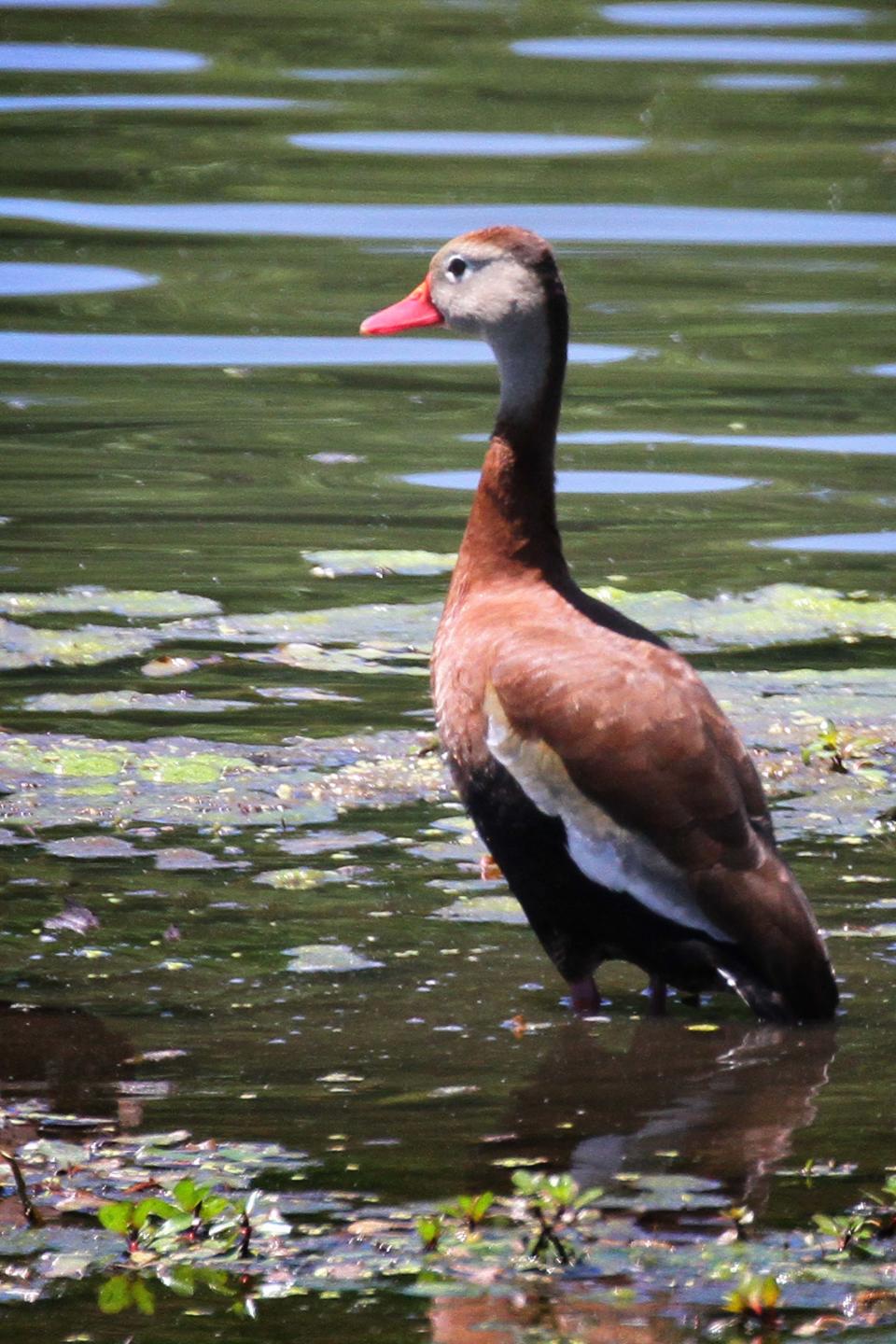In 2017, the first black-bellied whistling ducks were reported in Vanderburgh County, Indiana.
The following year, on July 28, two adults and 14 downy chicks were photographed in Posey County, confirming Indiana’s first breeding record.
Now, only seven years since that first sighting, black-bellied whistling ducks in Southwestern Indiana have regular breeding populations and are near-common sightings throughout the region.
That’s a big change. In fact, until 2000, black-bellied whistling ducks were found mainly in U.S. southern coastal areas, Mexico, and tropical Central and South America and even then only small populations inhabited the Texas and Louisiana coasts. According to the Encyclopedia of Life (eol.org), now the ducks “can be found year-round in much of the US, recorded in every eastern state and adjacent Canadian province.”
An updated black-bellied whistling ducks range map on eBird, an online reporting site of what’s where, illustrates scattered sightings as far north as Winnipeg, Manitoba.
Locally, statistics show a 10-year increase of 20%-25% with the highest single count of 49 recorded in 2022 in Greene County. This year’s highest single count so far has been 25, also in Greene County. Most area sightings peak in late July, but incidental sightings pop up as early as March. The most recent reported sighting occurred last week in Spencer County.
Without question, many sightings go unreported.
Even in profile, black-bellied whistling ducks would be hard to mistake. Sexes are identical, so it’s a straight-forward identification. Somewhat gooselike, they have long legs, long necks, and an erect stance and they walk, not waddle. Mostly chestnut brown with namesake black bellies, they’re really dark ducks − except for that wide white wing stripe. Oh, and don’t forget the bright pink bill and legs.

Then there’s the black-bellied whistling ducks unmistakable face. Pete Dunne, master birder, describes it as having an “overpainted harlot-like face, showing too much gray pancake makeup, an oversized lipstick-colored bill, and an exaggerated pale ring around the eye.”
How to account for the rapid range expansion? Perhaps in search of new territory to accommodate population growth combined with dramatic climate change, they’re wandering north. As Cornell Lab of Ornithology notes on its website, “They seem to readily adopt human-altered habitats, and this has helped them move north.”
Generally, black-bellies don’t migrate, but they do disperse, an ornithological term meaning they wander but stay anchored to a preferred breeding spot. They mate for life, find a happy home, and settle down. They prefer nesting in cavities, usually tree snags, and build no nest.
Given no other choice, though, they lay eggs in a scrape on the ground. In parts of the Deep South, a few black-bellies adapted, accepting man-made nest boxes. Because of their preferred tree-nesting behavior, they’re often seen roosting in trees or on logs over water and are particularly adept at perching on precarious spots. They’ve even been known to perch on corn stubble.
Black-bellies also display an odd daily routine. They loaf all day in or along shallow freshwater ponds, leave at sunset, giving their squealing-whistling call as they fly, and forage all night in grain fields, in short grass, and especially in flooded rice fields.
Near dawn, they return to a shallow freshwater pond where they can stand around and pick at aquatic vegetation.
Their behavior earns them another title for their oddity: They’re the least aquatic of all waterfowl.
For more information about birds and bird habitat, see Sharon Sorenson’s books How Birds Behave, Birds in the Yard Month by Month, and Planting Native to Attract Birds to Your Yard. Follow daily bird activity on Facebook at SharonSorensonBirdLady, or email her at chshsoren@gmail.com.
This article originally appeared on Evansville Courier & Press: Black-bellied whistling ducks are growing in Indiana
EMEA Tribune is not involved in this news article, it is taken from our partners and or from the News Agencies. Copyright and Credit go to the News Agencies, email news@emeatribune.com Follow our WhatsApp verified Channel





